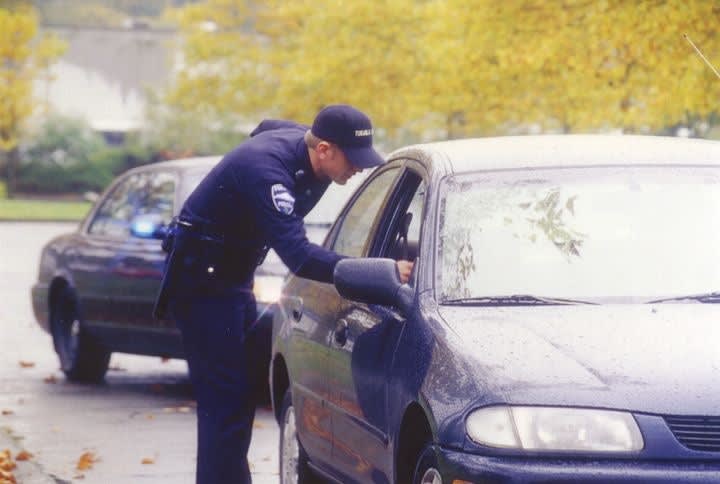Smith, cautious of oncoming traffic and following all of his self-preservation instincts and learned safety measures, approaches the violator's vehicle on the driver side. As he walks on the wet gravel of the shoulder, he checks the trunk, backseat, and passenger compartment for possible threats.
Illuminating the driver with his flashlight, Smith positions himself in a tactical position behind the known threat area alongside the vehicle, weapon side away and hand on his weapon ready to react. He then makes first contact with the driver, saying, "Good evening. Officer Smith with Everywhere P.D. The reason I...."
The silence of the night is broken with the sound of a single gunshot and squealing tires. There remains a dead calm with the only sounds to be heard the creatures of the night, the steady drizzle of the rain, and the rotating click and whir of the light bar.
Ever since the first officer pulled over a speeding vehicle, the standard practice of making a traffic stop has been the driver side approach. But just because a procedure or tactic is time-honored that doesn't necessarily mean it is sound.
The driver side approach has resulted in numerous injuries and deaths of law enforcement officers at the hands of violators and oncoming traffic. Some agencies and academies still teach it as the primary and reasoned way of contacting the driver and some departments decree that it is the most politically correct way to handle the stop and not violate the rights of the driver.












